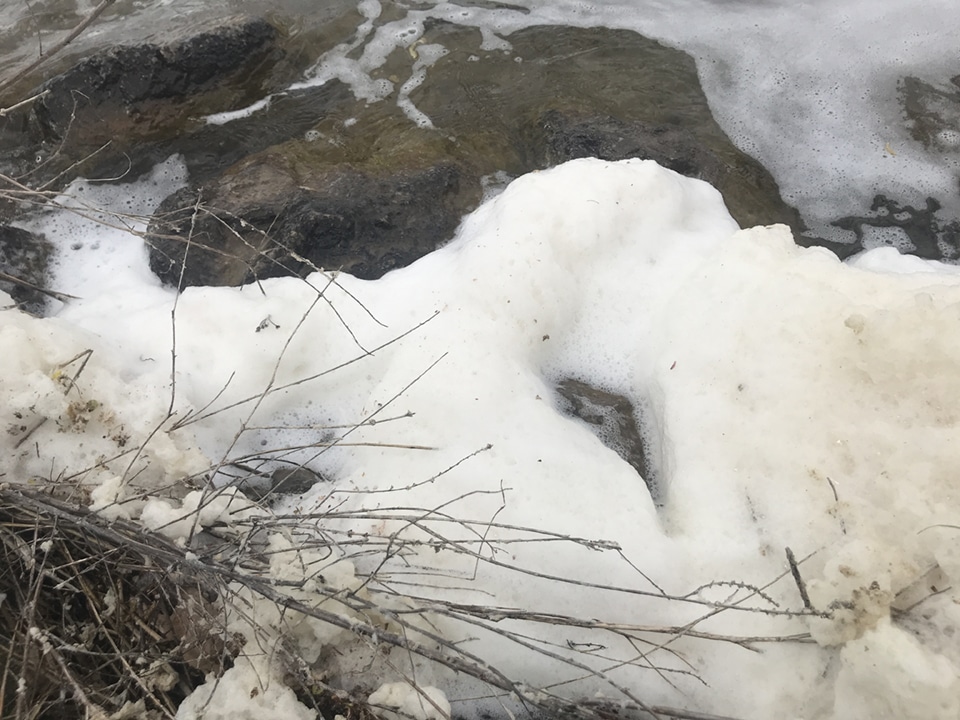Michigan’s weak laws on pollution keep regulators from protecting public health from toxic PFAS chemicals.
In the early and mid-1990s, Michigan had among the most protective pollution laws in the country, the envy of other states. When a company polluted the environment, it was held responsible for cleaning up the mess it made.

In the mid-’90s—after initially supporting pollution regulations—the Governor Engler administration flipped its allegiance. Under pressure from the Michigan Chamber of Commerce and other corporate lobbyists, lawmakers began systematically weakening environmental regulations and reducing the funding available for pollution cleanup. There are now more than 27,000 contaminated sites in Michigan.
Without strong deterrents and enforcement options, taxpayers are forced to pay the costs of cleaning up these contaminated sites or bear the weight of living with them.
The Polluter Playbook: Exploit Weak Laws to Avoid Consequences
Michigan’s weak environmental regulations fail in two critical ways. First, regulators have limited authority to hold polluters accountable. Second, constrained by a lack of funding and staffing and challenged by conflicting directions within state law, regulatory agencies find it extremely difficult to exercise the authority they do have.
The laws as they stand now are a stark contrast to the logical liability laws most of us are used to regarding property ownership. Keeping the condition of a house safe, for example, is the responsibility of the current owner. The owner has clear liability for care and maintenance of their structure. But Michigan’s pollution laws do not automatically assign responsibility to the owners of pollutant sources. Rather, the state must prove that the current owner is responsible for the original pollution and that they explicitly took on liability for it, or that they have created additional pollution since taking ownership.
This convoluted legal structure allows companies to play a shell game. For example, they can pollute a site then sell the land to another company or declare bankruptcy, giving ownership without liability for existing pollution to a new company that adds their own additional pollution. Created by corporate lobbyists, the framework of our current laws makes for a tangled, legal and regulatory nightmare. In some cases, it’s impossible to know which landowner polluted and when. Sometimes the responsible business is long gone. The result is that there are now more than 14,000 orphaned sites that have become the responsibility of either state or federal agencies, and the government can only afford to cleanup a tiny fraction of the total number of contaminated sites.
Weak laws tie regulators’ hands
Even in the most clear-cut cases, weak laws make it nearly impossible to demonstrate liability. If a chemical user dumps their hazardous waste into, say, the Huron River, state agencies are required to prove, beyond any shadow of a doubt, exactly where, when, and how the dumping took place. Even if there is no other possible source of the contamination, the expensive burden of proof falls entirely on regulatory agencies.
Meanwhile, polluters spend their resources fighting enforcement actions in court, delaying cleanups and shifting the expenses of investigation, cleanup and litigation to taxpayers. The Gelman 1,4-dioxane plume under the Ann Arbor area is a painful example of this strategy. There are hundreds of similar cases across Michigan where the polluter has already been identified, yet Michigan taxpayers are still paying for the pollution cleanup years later. At the end of it all, a polluter may settle with the state for a total cost that is far less than the amount required to complete the cleanup. For corporate polluters, dishonesty is cheaper than protecting their neighbors.
PFAS are more toxic and widespread than previously thought
As we confront the growing PFAS crisis, the need for action is as urgent as ever. Strong pollution prevention laws are critical to protecting public health. PFAS are extremely toxic and don’t break down in the environment. The problems they cause will only get worse until we stop using PFAS in our products and manufacturing processes, and until PFAS polluters are held accountable.
Several recent studies all point in the same, alarming direction. PFAS are more dangerous and more pervasive than previously thought. In 2021, the Center for Disease Control found that PFAS are in the blood of 97% of Americans. PFAS are in Great Lakes rainwater, in different animal species around the globe, and in remote locations like the Arctic and on Mount Everest. An Ecology Center study supported by HRWC and Friends of the Rouge found PFAS in every single fish sampled from both the Huron and Rouge River watersheds.
The Environmental Protection Agency released updated PFAS health advisory levels in June 2022, confirming that some PFAS are more than a thousand times more toxic than previously thought. The EPA’s proposed drinking water standards, released in March 2023, further highlight that no level of PFAS is safe and that we need to reduce our exposure to PFAS as much as possible. Learn more about PFAS and the Huron River.
Take action and hold polluters accountable
Recent efforts led by former state Representative Yousef Rabhi and state Senator Jeff Irwin reinvigorated the discussion to hold polluters accountable. With the new 2023 Michigan Legislature, there is an opportunity to correct the environmental mistakes of the past four decades.
Call your state representative and senator. Tell them that clean air and water are top priorities. Tell them they should support and co-sponsor legislation that holds polluters accountable and makes them pay for the messes they make. Tell them to give regulators the authority they need to deny high-risk permits, to enforce the laws we have, and to levy strict penalties against corporate polluters.
—Daniel Brown
This blog post is also published in the Huron River Report, Summer 2023.



